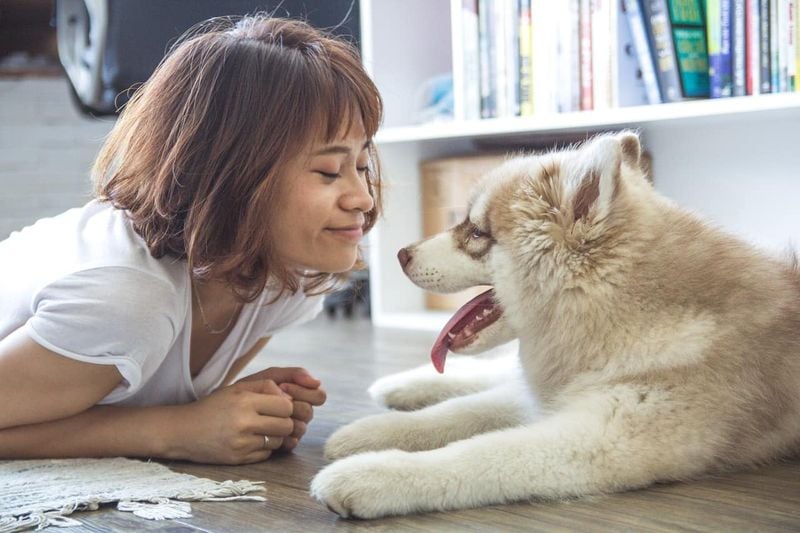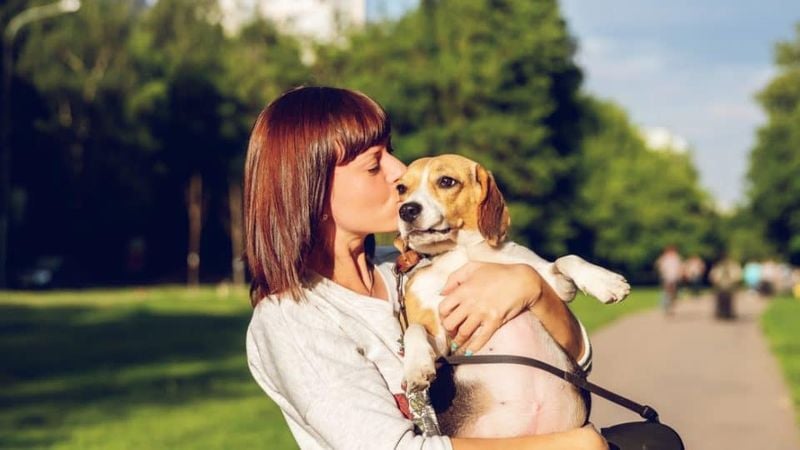12 Small Acts Your Dog Will Appreciate More Than You Think
Dogs give us unconditional love every single day. They wag their tails when we come home, follow us from room to room, and seem to understand our emotions better than we do ourselves. It’s only natural that we want to return that love in the best way possible. While treats, toys, and belly rubs are obvious crowd-pleasers, the truth is that many of the things your dog cherishes most are far simpler — and often overlooked.
From the way you speak to them to how you spend quiet moments together, it’s the subtle, consistent gestures that strengthen your bond and help your dog feel safe, seen, and truly loved. These small acts might seem minor to us, but in your dog’s world, they carry deep emotional weight. They’re signals of trust, comfort, and connection — and they can dramatically boost your pup’s happiness, confidence, and wellbeing.
Whether you’re a new dog owner or a seasoned canine companion, it’s worth reflecting on the little things. Because in the end, it’s not just the big adventures or fancy toys that make a difference — it’s the everyday actions that build a lasting relationship.
Ready to make your dog’s tail wag a little harder today? Here are 12 small things you can start doing right now that your dog will appreciate more than you might think.
1. Letting Them Sniff During Walks
Walking your dog isn’t just about exercise—it’s their chance to read the neighborhood news! Dogs experience the world primarily through their noses, with scent capabilities up to 100,000 times stronger than ours.
When you allow your pup those extra moments to investigate an interesting smell, you’re respecting their natural instincts and providing crucial mental stimulation. Many behavior problems stem from boredom, not lack of physical exercise.
Consider adding “sniffari” walks to your routine where your dog chooses the path and pace. You’ll notice a more satisfied, calmer companion who feels understood and respected.
2. Using a Gentle, Calm Voice
Dogs are masters at reading our emotions, especially through voice tone. Your furry friend can distinguish between happy, angry, and sad voices, responding differently to each one.
When you speak softly and calmly, their stress hormones actually decrease. Many owners don’t realize how sensitive canine hearing is—about four times more acute than ours.
Harsh or loud voices can trigger anxiety or fear responses, even when you’re not angry at them. Try lowering your volume and using a soothing tone when giving commands or just chatting with your pup.
You’ll likely notice them becoming more responsive and relaxed in your presence.
3. Creating a Cozy Safe Space
Dogs are den animals by nature, craving a personal retreat where they feel protected and secure. Your pup needs their own special spot—whether it’s a crate with a soft blanket or a dedicated corner with their bed.
The magic happens when this space becomes truly theirs, with familiar scents and comfortable textures. Many owners make the mistake of frequently washing bedding or moving their dog’s area, not realizing how important scent stability is to canine security.
Make their space special with items that smell like you, and respect it as a no-disturbance zone when they retreat there. This simple act acknowledges their need for occasional solitude and builds trust.
4. Learning Their Body Language
Your dog is constantly communicating with you through subtle signals most humans miss entirely. That slight ear twitch? The quick tail position change? The way they’re holding their mouth? All these are words in their silent language.
Contrary to popular belief, a wagging tail doesn’t always mean happiness—it could signal anxiety or arousal depending on the height and speed. Yawning often indicates stress, not tiredness.
When you take time to decode these signals, you’re showing profound respect for their communication style. Observe your dog during different activities and emotional states.
Learning their unique body language vocabulary prevents misunderstandings and builds a relationship where they feel truly seen and understood.
5. Offering Choices When Possible
Freedom of choice might seem like a human concept, but dogs thrive when given appropriate options. Allowing your furry friend to select which toy to play with or which direction to walk creates confidence and reduces anxiety.
Research shows that dogs who have some control over their environment display fewer stress behaviors and learn more effectively. Simple choice opportunities like offering two different treats or letting them decide when to end a game respect their autonomy.
Start small by presenting two toys and seeing which one captures their interest. Watch how your dog’s personality blossoms when they realize their preferences matter to you—their tail will wag a little higher and their trust in you will deepen.
6. Making Eye Contact (Gently!)
Soft eye contact with your dog releases oxytocin—the same bonding hormone mothers feel with their babies. This chemical connection strengthens your relationship in ways few other interactions can match.
Hard staring can feel threatening to dogs, but gentle gazing communicates love and security. Many pet parents miss this distinction, accidentally sending mixed signals. The key is keeping your expression soft and blinking occasionally to show peaceful intentions.
Try this: sit quietly with your dog and make gentle eye contact for a few seconds, then look away. Repeat this natural pattern during cuddle sessions.
You’ll notice your pup becoming more attentive and responsive as this special form of communication becomes part of your shared language.
7. Massaging Their Ears or Shoulders
Your dog’s ears and shoulders contain surprising concentrations of nerve endings and pressure points. Gentle massage here releases endorphins—natural feel-good chemicals—creating a wave of relaxation throughout their body.
Most dogs carry tension in their shoulder muscles, especially active breeds or seniors with arthritis. A few minutes of gentle circular motions with your fingertips can dramatically improve their comfort.
For ears, focus on the base where they connect to the head, using very light pressure. Pay attention to your dog’s reactions—closed eyes, leaning into your touch, or a relaxed mouth all signal enjoyment.
This small act of physical care communicates love in a language that transcends words and creates a moment of peaceful connection.
8. Keeping a Predictable Routine
Dogs thrive on knowing what comes next—it’s hardwired into their nature. A consistent schedule for meals, walks, and bedtime creates a foundation of security that reduces anxiety and builds confidence.
Your furry friend actually has an impressive internal clock, often knowing exactly when dinner time approaches. When routines suddenly change, many dogs experience genuine stress because their expectations have been disrupted.
Create simple rituals around daily activities, like a specific phrase before walks or a gentle pat before bedtime. These predictable patterns become anchors in your dog’s day, giving them confidence that their world is stable and their needs will be met—a profound gift in their relatively simple understanding of life.
9. Brushing Their Coat (Even Short-Haired Dogs)
Brushing isn’t just for fluffy breeds—it’s a powerful bonding ritual for every dog. The gentle sensation of bristles against skin mimics the social grooming dogs naturally share with packmates, triggering deep relaxation responses.
Even short-coated breeds benefit enormously from regular brushing. It removes loose fur, distributes natural oils, and stimulates blood circulation to improve skin health.
The physical contact during brushing releases oxytocin for both of you, strengthening your emotional connection. Experiment with different brushes to find what your dog enjoys most—soft bristles, rubber curry combs, or grooming mitts.
Make sessions short and pleasant, focusing on areas they love having touched. Many dogs who initially resist brushing come to treasure this special time together.
10. Playing Just for Fun (Not Training)
Pure, purposeless play speaks directly to your dog’s heart. Unlike training sessions with goals and rules, unstructured play where you follow their lead shows you value their joy for its own sake.
Dogs can tell the difference between obligatory interaction and genuine engagement. When you get silly—maybe crawling on the floor or making playful sounds—you’re stepping into their world completely.
This type of authentic connection builds trust that carries over into every aspect of your relationship. Notice which games make your dog’s eyes light up with real happiness.
Is it gentle tug-of-war? Chasing games? Explorer walks? Dedicating even five minutes daily to their favorite activity creates a highlight they’ll anticipate with waggy-tailed enthusiasm.
11. Giving Them Time to Just “Be” With You
Dogs are social creatures who value presence over activity. Simply existing together in peaceful companionship—what animal behaviorists call “co-being”—fulfills a deep emotional need for your furry friend.
Modern life keeps us constantly busy, but your dog treasures those quiet moments when you’re both just sharing space without demands or distractions. This might be sitting together watching TV, reading while they doze nearby, or just sharing the same room while you work.
Put down your phone occasionally and just be fully present with your dog. This mindful togetherness communicates that they’re valued not just for what they do but simply for who they are—the purest form of love in both human and canine understanding.
12. Saying “I Love You” in Dog Language
Dogs don’t understand our words, but they fluently read the language of action and energy. Communicating love in ways meaningful to them creates a deeper connection than any verbal expression.
Slow blinks, gentle sighs, and relaxed body language all translate to “I love you” in canine communication. Respecting their space, honoring their preferences, and responding to their needs promptly all say “you matter” more clearly than any human phrase.
Watch how your dog expresses affection to you—maybe they lean against your legs or bring toys as gifts—and mirror these gestures back. This reciprocal emotional exchange speaks directly to their heart in their native tongue, creating moments of perfect understanding between two very different species.

















